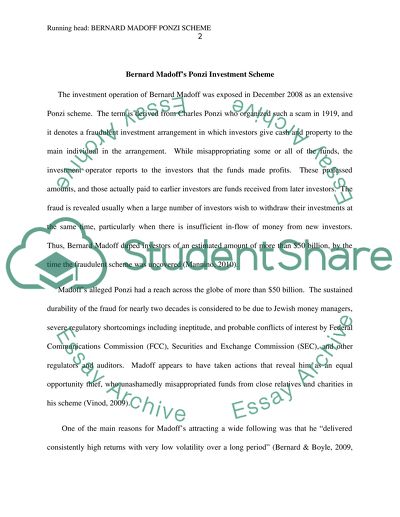Cite this document
(“Bernard Madoff Ponzi Scheme Case Essay Example | Topics and Well Written Essays - 1500 words”, n.d.)
Retrieved from https://studentshare.org/law/1429812-bernard-madoff-ponzi-scheme-case
Retrieved from https://studentshare.org/law/1429812-bernard-madoff-ponzi-scheme-case
(Bernard Madoff Ponzi Scheme Case Essay Example | Topics and Well Written Essays - 1500 Words)
https://studentshare.org/law/1429812-bernard-madoff-ponzi-scheme-case.
https://studentshare.org/law/1429812-bernard-madoff-ponzi-scheme-case.
“Bernard Madoff Ponzi Scheme Case Essay Example | Topics and Well Written Essays - 1500 Words”, n.d. https://studentshare.org/law/1429812-bernard-madoff-ponzi-scheme-case.


